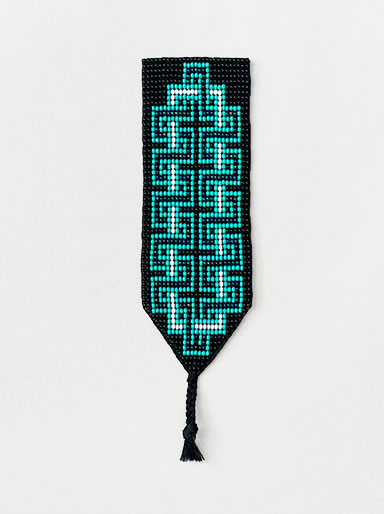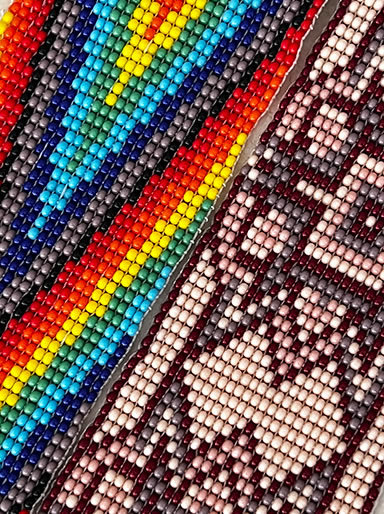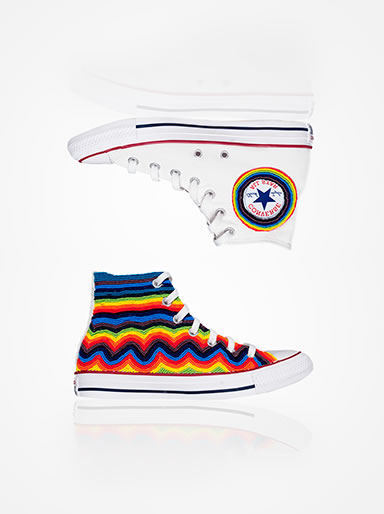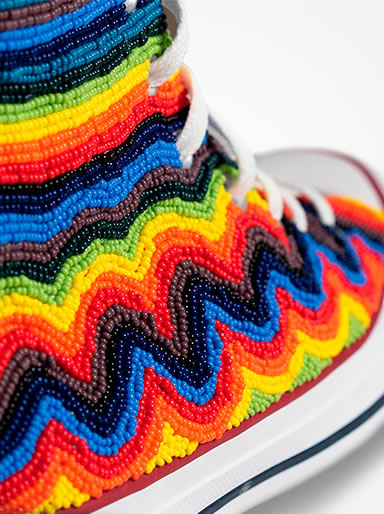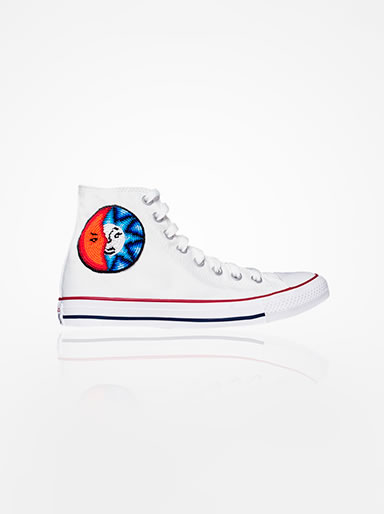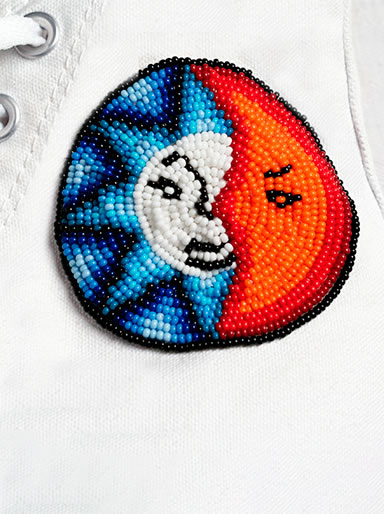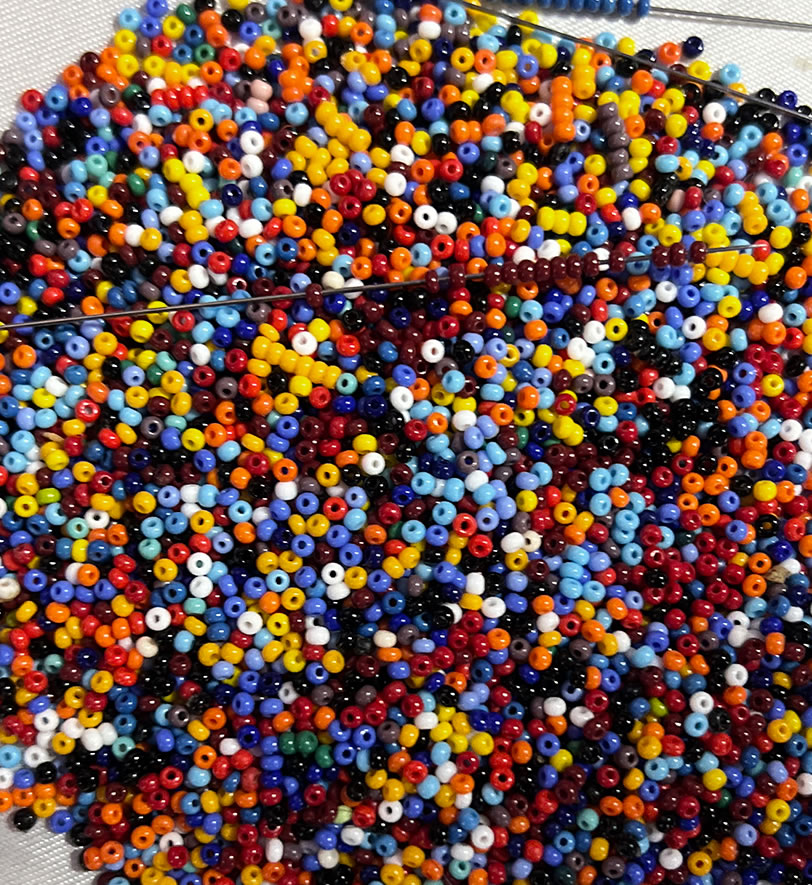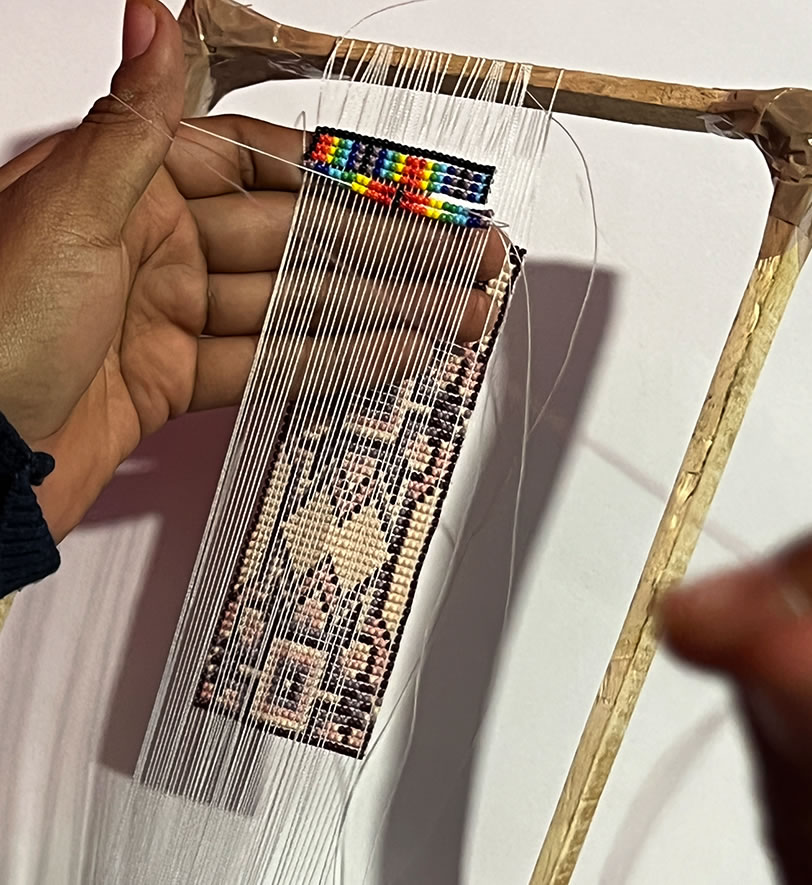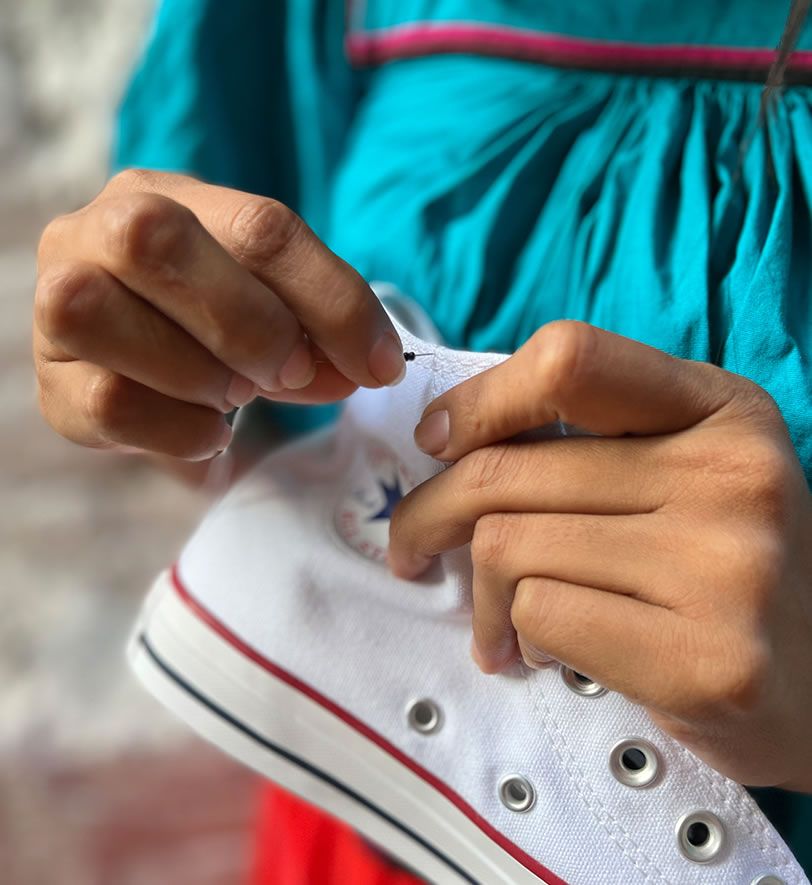History
In pre-Hispanic Mexico, Wixárika handicrafts were made using jade, turquoise, and slate. Now, it is created using colorful crystal beads, which more accurately represent their ceremonial experiences.
The women (the gender that practices this technique) through their art immortalize what they venerate, accompanied by flora and fauna, thus capturing different histories and meanings on their distinct canvases.
Process
Ideation
By envisioning the figure and selecting the color combination, the artisan demonstrates their expertise. The skillful use of color showcases their artistic ability. Each design presents a unique challenge for the artisan, as they must find the precise quantity, proper orientation, and suitable utilization of crystal beads to bring forth the desired figure.
Weave
The joining of crystal beads creates canvases with ancestral symbolism. Additionally, they can be stitched together to create three-dimensional pieces. Fabric is not used in this technique; instead, pure crystal beads are used to create jewelry and ornaments.
Embroidery
The crystal beads are directly embroidered onto the fabric. The thread is threaded through the needle, and the crystal beads are inserted onto the fabric according to their color in relation to the design. Each crystal bead is individually stitched with precise stitches, and each crystal bead represents a single stitch.
Each crystal bead is a stitch filled with history, meaning, color, and tradition.

